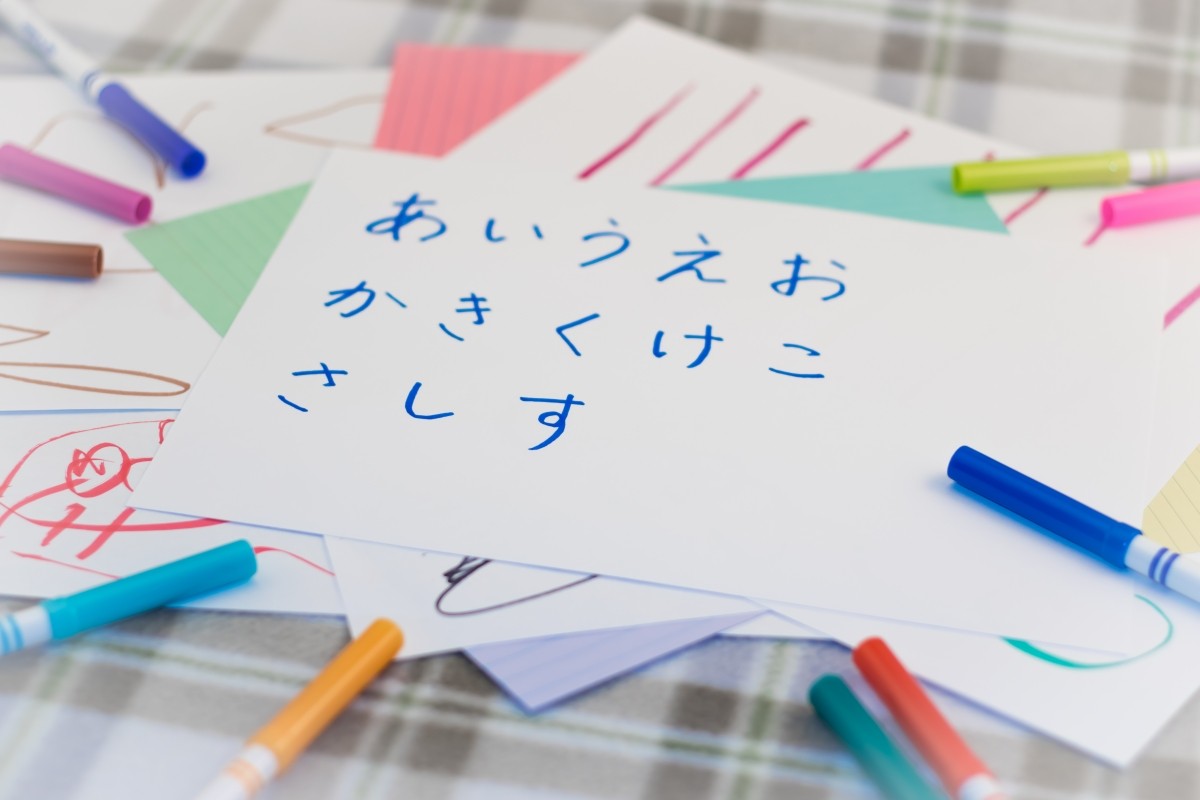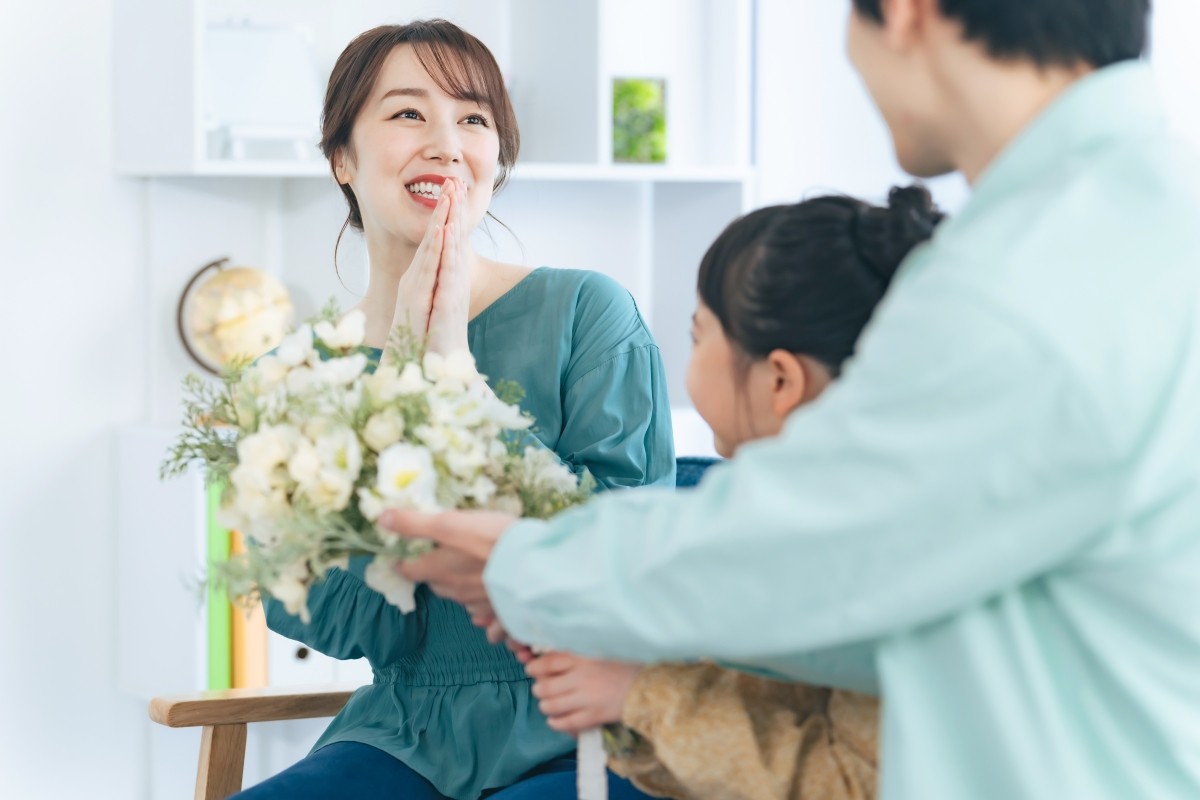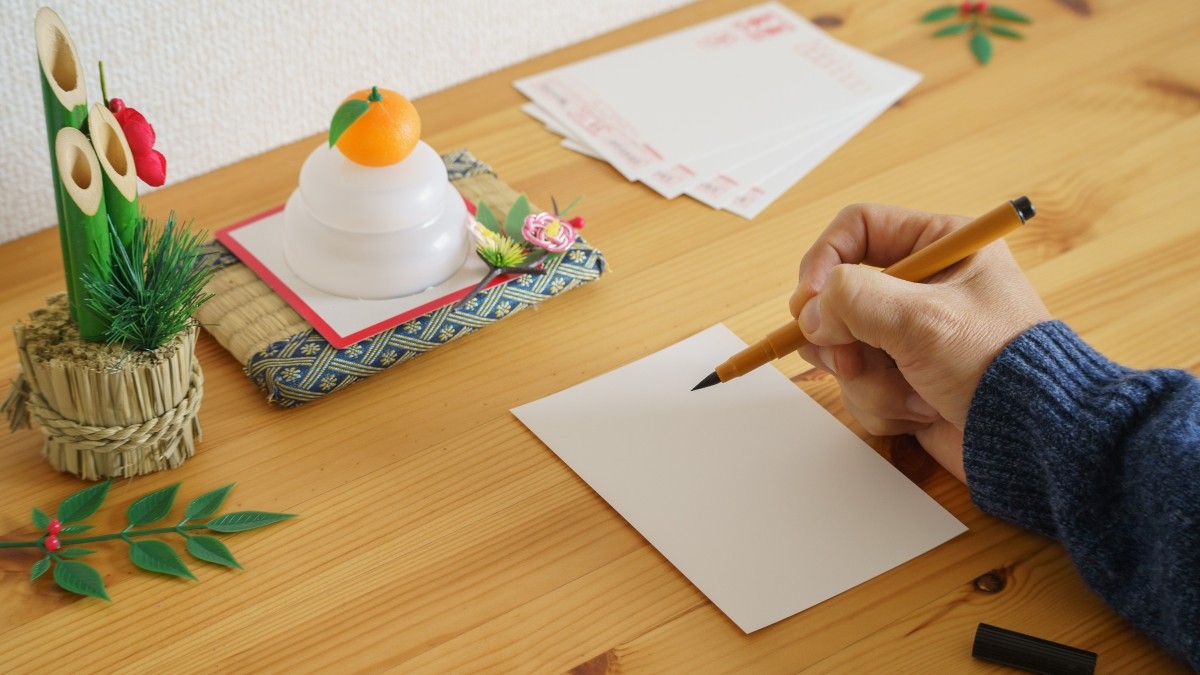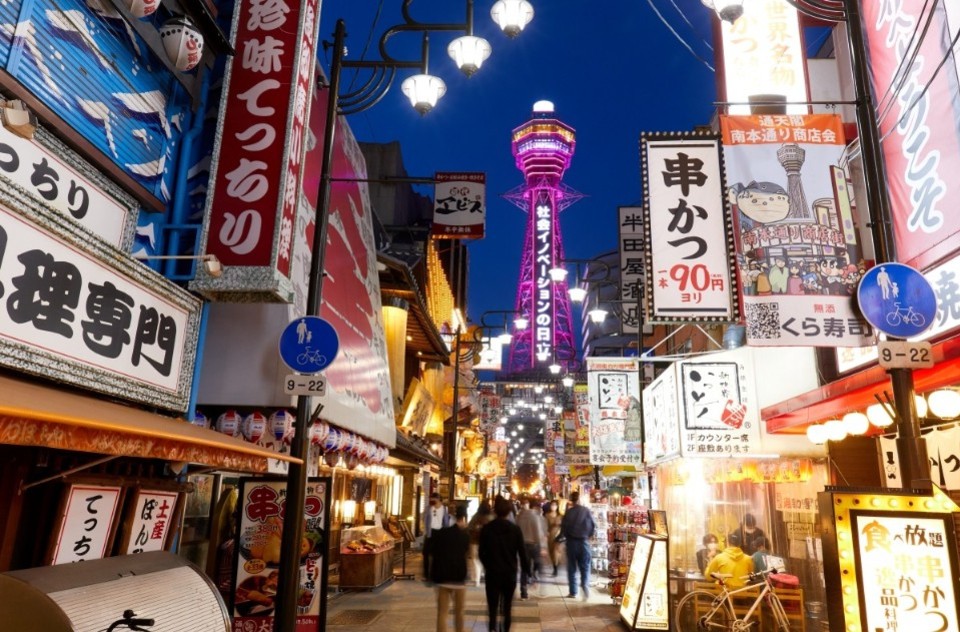
Japanese has its own unique rules and beautiful expressions, from how to read “months” and “weekdays” to numbers, and the use of ひらがな(Hiragana) and カタカナ(Katakana). Furthermore, if you learn words for greetings and expressing emotions, such as “おはようございます(good morning),” “ありがとう(thank you),” and “愛してる(I love you),” you’ll definitely be able to communicate more smoothly with Japanese people.
This article introduces the basics of Japanese in an easy-to-understand way for beginners, covering characters, pronunciation, and useful everyday phrases. Let’s enjoy learning together with videos and tables, from how to read numbers and the differences in writing systems, to essential Japanese words.
ひらがな(Hiragana) and カタカナ(Katakana) in Japanese
When learning Japanese, the first things to memorize are ひらがな(Hiragana) and カタカナ(Katakana). Both represent the same sounds, but are used in slightly different situations and give different impressions. Knowing the basics will make reading Japanese sentences much easier.
ひらがな(Hiragana) Chart and How to Pronounce
ひらがな(Hiragana) is the most commonly used script in Japanese. You’ll see it everywhere—in daily conversation, books, signs—so it’s best to start by learning these characters.

If you want to practice while checking the pronunciation, please refer to this page as well.
👉 Click here for the full hiragana pronunciation chart
カタカナ(Katakana) Chart and How to Pronounce
カタカナ(Katakana) is used for writing loanwords, foreign place names, and people’s names. You’ll often see it on signs and restaurant menus.

If you want to learn while checking the pronunciation, take a look at this page.
👉 Click here for the full katakana pronunciation chart
Japanese Numbers and How to Read Them
If you learn the basic way to read numbers in Japanese, it will be useful in many everyday situations, such as dates, times, and amounts of money. The words for 0 to 10 are short, so it’s recommended to master these basics first.
Basic Japanese Numbers (0–10)
| Number | ひらがな | Romaji | Kanji | English |
| 0 | れい/ゼロ | Rei/Zero | 零 | zero |
| 1 | いち | Ichi | 一 | one |
| 2 | に | Ni | 二 | two |
| 3 | さん | San | 三 | three |
| 4 | し/よん | Shi/Yon | 四 | four |
| 5 | ご | Go | 五 | five |
| 6 | ろく | Roku | 六 | six |
| 7 | しち/なな | Shichi/Nana | 七 | seven |
| 8 | はち | Hachi | 八 | eight |
| 9 | きゅう | Kyu | 九 | nine |
| 10 | じゅう | Juu | 十 | ten |
Tips for Combining Japanese Numbers
In Japanese, numbers are constructed based on “10(じゅう/juu)”, forming numbers like “20(にじゅう/ni juu)” and “30(さんじゅう/san juu)”.
It is also characteristic that as the units increase, new terms are added, such as “100(ひゃく/hyaku)”, “1,000(せん/sen)”, and “10,000(いちまん/ichi man)”.
Examples of How to Read Numbers in Japanese
- 105 → ひゃくご/hyaku go
- 248 → にひゃくよんじゅうはち/ni hyaku yon juu hachi
- 3,000 → さんぜん/san zen
- 11,111 → いちまんいっせんひゃくじゅういち/ichi man issen hyaku juu ichi
Be Careful of Special Readings for Japanese Numbers
Some numbers have slightly different pronunciations.
For example, “300” is pronounced さんびゃく(san byaku), “600” is ろっぴゃく(rop pyaku), and “800” is はっぴゃく(hap pyaku). These changes are due to unique Japanese sound combinations, and once you get used to them, they become natural to read. Also, for phone numbers or room numbers, it is common to use “ゼロ(zero)” instead of “れい(rei)”.
Large Numbers in Japanese
In Japanese, the unit “万(まん/man)” is especially important. While in English you would say “ten thousand”, in Japanese it is counted as a single unit, “一万(いちまん/ichi man)”, so it may take some getting used to at first. Once you understand this system, reading large numbers becomes much easier.
| Number | ひらがな | Romaji | English |
| 100 | ひゃく | Hyaku | hundred |
| 1,000 | せん | Sen | thousand |
| 10,000 | いちまん | Ichi man | ten thousand |
| 100,000 | じゅうまん | Juu man | hundred thousand |
| 1,000,000 | ひゃくまん | Hyaku man | one million |
How to Read Months, Days, and Weekdays in Japanese
Japanese calendars are written with a combination of numbers and kanji. It may look a bit complicated, but once you learn the reading rules, you’ll quickly get used to it and be able to use them easily.
How to Read Months in Japanese
In Japanese, the names of the months are expressed by adding “月(がつ/gatsu)” to the number. For example, “1月(いちがつ/ichigatsu)” and “2月(にがつ/nigatsu)” are read together with the number. However, some months have special readings that do not follow the usual number readings. Pay attention to these sound changes.
| Month | ひらがな | Romaji | English |
| 1月 | いちがつ | Ichigatsu | January |
| 2月 | にがつ | Nigatsu | February |
| 3月 | さんがつ | Sangatsu | March |
| 4月 | しがつ | Shigatsu | April |
| 5月 | ごがつ | Gogatsu | May |
| 6月 | ろくがつ | Rokugatsu | June |
| 7月 | しちがつ | Shichigatsu | July |
| 8月 | はちがつ | Hachigatsu | August |
| 9月 | くがつ | Kugatsu | September |
| 10月 | じゅうがつ | Juugatsu | October |
| 11月 | じゅういちがつ | Juuichigatsu | November |
| 12月 | じゅうにがつ | Juunigatsu | December |
How to Read Dates in Japanese
When reading dates in Japanese, most numbers are followed by “にち(nichi)”, but some dates have special readings. These special dates are often used in daily conversation, so it’s recommended to memorize them as they are.
| Date | ひらがな | Romaji | English |
| 1日 | ついたち | Tsuitachi | 1st |
| 2日 | ふつか | Futsuka | 2nd |
| 3日 | みっか | Mikka | 3rd |
| 4日 | よっか | Yokka | 4th |
| 5日 | いつか | Itsuka | 5th |
| 6日 | むいか | Muika | 6th |
| 7日 | なのか | Nanoka | 7th |
| 8日 | ようか | Youka | 8th |
| 9日 | ここのか | Kokonoka | 9th |
| 10日 | とおか | Tooka | 10th |
| 11日 | じゅういちにち | Juuichinichi | 11th |
| 12日 | じゅうににち | Juuninichi | 12th |
| 13日 | じゅうさんにち | Juuusannnichi | 13th |
| 14日 | じゅうよっか | Juuyokka | 14th |
| 15日 | じゅうごにち | Juuugonichi | 15th |
| 16日 | じゅうろくにち | Juurokunichi | 16th |
| 17日 | じゅうしちにち | Juushichinichi | 17th |
| 18日 | じゅうはちにち | Juuhachinichi | 18th |
| 19日 | じゅうくにち | Juukunichi | 19th |
| 20日 | はつか | Hatsuka | 20th |
| 21日 | にじゅういちにち | Nijuuichinichi | 21st |
| 22日 | にじゅうににち | Nijuuninichi | 22nd |
| 23日 | にじゅうさんにち | Nijuusannichi | 23rd |
| 24日 | にじゅうよっか | Nijuuyokka | 24th |
| 25日 | にじゅうごにち | Nijuugonichi | 25th |
| 26日 | にじゅうろくにち | Nijuurokunichi | 26th |
| 27日 | にじゅうしちにち | Nijuushichinichi | 27th |
| 28日 | にじゅうはちにち | Nijuuhachinichi | 28th |
| 29日 | にじゅうくにち | Nijuukunichi | 29th |
| 30日 | さんじゅうにち | Sanjuunichi | 30th |
| 31日 | さんじゅういちにち | Sanjuuichinichi | 31st |
How to Read the Days of the Week in Japanese
The names of the days of the week in Japanese come from the names of natural elements and celestial bodies.
The word “曜日(ようび/youbi)” is derived from “日(ひ/hi),” and can be directly translated as “day of.” For example, “火曜日(かようび/kayoubi)” means “fire,” and “水曜日(すいようび/suiyoubi)” means “water.”
| 曜日 | ひらがな | Romaji | English |
| 月曜日 | げつようび | Getsuyoubi | Monday |
| 火曜日 | かようび | Kayoubi | Tuesday |
| 水曜日 | すいようび | Suiyoubi | Wednesday |
| 木曜日 | もくようび | Mokuyoubi | Thursday |
| 金曜日 | きんようび | Kinyoubi | Friday |
| 土曜日 | どようび | Doyoubi | Saturday |
| 日曜日 | にちようび | Nichiyoubi | Sunday |
“Good Morning” in Japanese: What Does “Ohayou gozaimasu” Mean?

The Japanese greeting used when you meet someone in the morning is “おはようございます(ohayou gozaimasu).” It’s a convenient phrase that can be used in any situation, such as at school, work, hotels, or restaurants, and it corresponds to “Good morning” in English.
How to Use “おはようございます(ohayou gozaimasu)”
“おはようございます(ohayou gozaimasu)” is a polite expression, used with superiors or people you are meeting for the first time. The ending “ございます(gozaimasu)” is a form of honorific language that adds politeness. With family, friends, or people you are close to, it’s common to simply say “おはよう(ohayou).”
How to Respond to “おはようございます(ohayou gozaimasu)”
If someone says “おはようございます(ohayou gozaimasu)” to you, you should reply with “おはようございます(ohayou gozaimasu)” as well. If you are close to the person, just “おはよう(ohayou)” is also natural.
📘 See more about how to use “おはようございます(ohayou gozaimasu)” and example sentences
“Hello” in Japanese: What Does “Konnichiwa” Mean?

The Japanese greeting used during the day is “こんにちは(konnichiwa).” It’s a convenient greeting that is close in meaning to “Hello” or “Good afternoon” in English.
How to Use “こんにちは(konnichiwa)”
“こんにちは(konnichiwa)” is used when you meet someone during the day or as a greeting to someone you are meeting for the first time.
In the morning, you use “おはようございます(ohayou gozaimasu),” and in the evening, it changes to “こんばんは(konbanwa).”
Because “こんにちは(konnichiwa)” has a formal impression, it is not often used among close friends, family, or colleagues. Instead, it is commonly used in situations where you want to show light politeness, such as with neighbors, store staff, hotel staff, or people you pass while hiking.
How to Respond to “こんにちは(konnichiwa)”
If someone says “こんにちは(konnichiwa)” to you, the basic response is to reply with “こんにちは(konnichiwa)” as well.
📘See how to use “こんにちは(konnichiwa)” and example conversations
“Good Evening” in Japanese: What Does “Konbanwa” Mean?

The greeting used when meeting someone from evening to night is "こんばんは(konbanwa)." This is similar to the English expression “Good evening,” and is used as the first greeting when meeting colleagues after work or at nighttime events.
How to Use "こんばんは(konbanwa)"
"こんばんは(konbanwa)" is used as the initial greeting when you meet someone at night. However, just like "こんにちは(konnichiwa)," it is a bit too formal to use with close friends. It is commonly used when passing by neighbors or in similar situations.
How to Respond to "こんばんは(konbanwa)"
If someone says "こんばんは(konbanwa)" to you, you should reply with "こんばんは(konbanwa)" as well.
📘See How to Use "こんばんは(konbanwa)" and Example Conversations
“Thank You” in Japanese: What Does “Arigatou” Mean?

The basic word for expressing gratitude in Japanese is "ありがとう(arigatou)." This corresponds to the English “Thank you,” and is frequently used in all kinds of situations, such as traveling or shopping. In Japan, it is customary to say thank you even for small things, so just knowing this word will help you make a much better impression.
How to Use "ありがとう(arigatou)"
"ありがとう(arigatou)" is a casual expression often used in conversations with close friends, family, or people you are familiar with.
In formal situations or when speaking to someone of higher status, use the more polite "ありがとうございます(arigatou gozaimasu)." If you want to express even deeper gratitude, you can say "本当にありがとうございます(hontou ni arigatou gozaimasu)" or "どうもありがとうございます(doumo arigatou gozaimasu)."
How to Respond to "ありがとう(arigatou)"
If someone says "ありがとう(arigatou)" to you, the basic response is to smile and say "どういたしまして(dou itashimashite)." However, in daily conversation, it is also common to use more natural replies such as "いえいえ(ieie)" or "大丈夫(daijyoubu)."
📘See How to Use "ありがとう(arigatou)" and Example Conversations
“I Love You” in Japanese: What Does “Aishiteru” Mean?

The Japanese phrase for “I love you” is "愛してる(aishiteru)." However, this is a very strong expression of emotion and is not used often in daily life. Japanese people tend to show affection more through actions and behavior than words, so it is important to use this phrase carefully.
How to Use "愛してる(aishiteru)"
"愛してる(aishiteru)" is mainly used between couples or married partners. On the other hand, in everyday conversation, it is more common to use softer expressions.
- 大好き(daisuki):I really like you
- 好きだよ(suki da yo):I like you / I care about you
How to Respond to "愛してる(aishiteru)"
If someone says "愛してる(aishiteru)" to you and you feel the same way, you can reply with "私も愛してる(watashi mo aishiteru)." If you feel shy, you can express your feelings with words like "ありがとう(arigatou)" or "うれしい(ureshii)."
📘 See More About Expressing Love in Japanese, Such as "愛してる(aishiteru)" and "好き(suki)"
“Good Night” in Japanese: What Does “Oyasuminasai” Mean?

The greeting used at night, before going to sleep, or when parting ways with someone at the end of the day is “おやすみなさい(oyasuminasai)”.
This is the Japanese equivalent of “Good night” in English, and it is used with people you are close to, such as family, friends, or a romantic partner.
How to Use “おやすみなさい(oyasuminasai)”
“おやすみなさい(oyasuminasai)” is a polite expression that can be used with a wide range of people, including family and friends. If you want to say it more casually, just “おやすみ(oyasumi)” is also fine.
How to Respond to “おやすみなさい(oyasuminasai)”
If someone says “おやすみなさい(oyasuminasai)” to you, you can reply with “おやすみなさい(oyasuminasai)” in return.
📘See examples of how to use “おやすみなさい(oyasuminasai)” in conversation
"Do your best" or "Good Luck" in Japanese: What Does “がんばれ” Mean?

The word often used in Japanese to encourage someone is “がんばれ(ganbare)”. It has a meaning similar to “Do your best!” or “Good luck!” in English, and is used in various situations such as cheering for someone at sports events or encouraging someone at work.
How to Use “がんばれ(ganbare)”
“がんばれ(ganbare)” is a casual expression used with people you are close to. It is naturally used when cheering on friends, family, or someone in a sports match. In more formal situations or when speaking to someone of higher status, “がんばってください(ganbatte kudasai)” is more appropriate.
How to Respond to “がんばれ(ganbare)”
If someone says “がんばれ(ganbare)” to you, it is natural to reply with “うん、がんばる!(un, ganbaru!)” or “ありがとう(arigatou)”.
📘See examples of how to use “がんばれ(ganbare)” in conversation
“Happy Birthday” in Japanese: What Does “誕生日おめでとう” Mean?

The expression used in Japanese to say “Happy Birthday” is “誕生日おめでとう(tanjoubi omedetou)”. It is often used to celebrate with close people such as friends, family, or a romantic partner.
How to Use “誕生日おめでとう(tanjoubi omedetou)”
“誕生日おめでとう(tanjoubi omedetou)” is a casual phrase used with people of the same age or those you are close to. If you want to say it more politely, use “お誕生日おめでとうございます(otanjoubi omedetou gozaimasu)”.
How to Respond to “誕生日おめでとう(tanjoubi omedetou)”
When you receive birthday wishes, the basic way to reply is with “ありがとう(arigatou)”.
📘 See examples of how to use “誕生日おめでとう(tanjoubi omedetou)” and message samples
What Does “どうも” Mean?

In Japanese, “どうも(doumo)” is a very useful word that can be used in various situations such as greetings, expressing thanks, or giving a light response.
How to Use and Differentiate “どうも(doumo)”
There are mainly three ways to use “どうも(doumo)”.
| Usage | Example Sentence | Meaning |
| Greeting | どうも(doumo)。きょうはいいてんきですね(kyou wa ii tenki desu ne)。 | Hi / Hello |
| Thanks | どうもありがとうございます(doumo arigatou gozaimasu)。 | Thank you very much |
| Response / Aizuchi | どうも…すみません(doumo… sumimasen)。 | Uh, well… / Sorry / Thanks |
How to Respond to “どうも(doumo)”
If someone thanks you with “どうも(doumo),” it’s natural to reply with “こちらこそ(kochira koso)” or “いえいえ(ie ie).” If it’s used as a greeting, respond with another greeting such as “お疲れ様です(otsukare sama desu)” or “こんにちは(konnichiwa).”
📘See examples of how to use “どうも(doumo)” in conversation
“I'm home” in Japanese: What Does “ただいま” Mean?

In Japanese, “ただいま(tadaima)” is a greeting used when you return home. In English, it’s close in meaning to “I’m home.” It’s used towards family members or people you live with.
How to Use “ただいま(tadaima)” and When to Use It
“ただいま(tadaima)” is a phrase used at home when you come back from being out. When entering someone else’s house, you should use “お邪魔します(ojama shimasu)” instead.
How to Respond to “ただいま(tadaima)”
When someone says “ただいま(tadaima),” you reply with “おかえり(okaeri)” or “おかえりなさい(okaerinasai).”
📘See examples of how to use “ただいま(tadaima)” in conversation
Main Japanese Dialects: Kansai-ben, Kyo-kotoba, and More
In Japanese, the way words are used and the intonation can differ slightly depending on the region. These regional ways of speaking are called 方言(hougen), or dialects.
Kansai-ben (Dialect Used in Osaka and Kyoto)
関西弁(kansai-ben) is a dialect mainly used in the Kansai region, including Osaka, Hyogo, Nara, and Kyoto. Because it’s often heard on TV shows, it’s one of the most well-known dialects throughout Japan.
| 関西弁 | Romaji | Meaning |
| めっちゃ | meccha | very / super |
| あかん | akan | no good / not allowed |
| ほんま | honma | really |
| おおきに | ookini | thank you |
📘See more about the features and usage of 関西弁(kansai-ben)
Kyo-kotoba (Language Used in Kyoto)
京ことば(kyo-kotoba) is the dialect spoken in Kyoto, known for its elegant and gentle sound.
| 京ことば | Romaji | Meaning |
| ごめんやす | gomen yasu | Hello |
| おいでやす | oide yasu | Welcome |
| おおきに | ookini | thank you |
📘See more about the features and usage of 京ことば(kyo-kotoba)
Japanese Onomatopoeia (Giongo & Gitaigo)
Japanese has many words that express sounds, movements, and emotions through sound. These are called onomatopoeia, or 擬音語(giongo) and 擬態語(gitaigo). One feature of Japanese is that these are frequently used in everyday conversation.
Commonly Used Onomatopoeia Examples
| Onomatope | Romaji | English | Description |
| どきどき | doki doki | heart beating / nervous | Feeling nervous or your heart pounding |
| きらきら | kira kira | sparkling / shining | Something shining or beautiful |
| ぐっすり | gussuri | sound asleep | Sleeping deeply |
| わくわく | waku waku | excited / looking forward | Feeling excited or looking forward to something |
📘See More About Japanese Onomatopoeia (Giongo & Gitaigo)
【With Video】Useful Japanese for Business Situations
In the following videos, you can learn Japanese expressions commonly used in the office through conversational examples. Be sure to check the pronunciation and natural intonation as well.
Seasonal Words for Japanese Letters and Emails

In Japan, there is a custom of adding seasonal words at the beginning of letters and emails. This is called 時候のあいさつ(jikou no aisatsu). While this kind of expression is not very common in English, in Japanese it is typical to convey thoughtfulness to the recipient by using words that evoke the season.







Comments